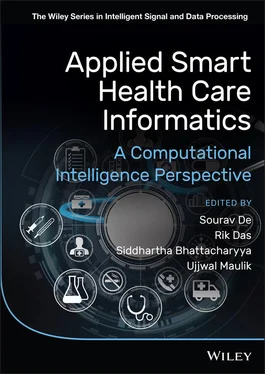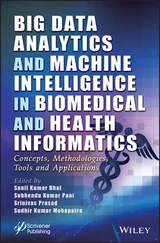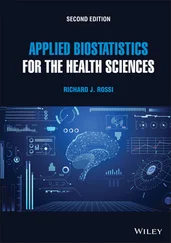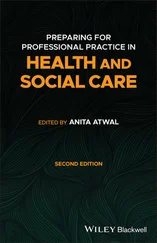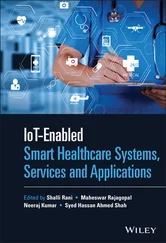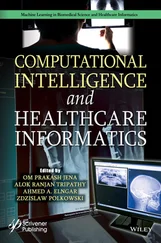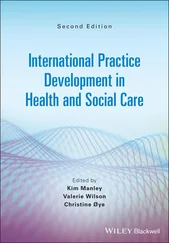AI benefits health care organizations by implementing cognitive technology to unwind a huge amount of medical records and perform power diagnosis. For instance, Nuance is a production service provider that uses artificial intelligence and machine learning to predict the intent of a particular user. By implementing Nuance in organization system to develop a personalized user experience, a company can make better actions that enhance customer experience and overall benefit the organization. Nuance helps in the storing, collecting, and reformatting of data to provide faster and more consistent access to allow further analysis or diagnosis. These are examples of how AI is gaining attention and being helpful to the health care industry (Aronson and Rehm, 2015; Schmidt‐Erfurth et al., 2018).
1.4 Cloud Computing in Healthcare
There are numerous advantages and benefits of cloud computing in health care as it stores data on demand and reduces operational costs for health care providers such as hospitals and clinics (Rostrom and Teng, 2011). The cloud also supports electronic health records (EHRs), mobile applications that are used for medical concern applications. The cloud has made access to patient's medical history easier for doctors, and patients can now have a clear, in depth track of their medical process as well as track their appointments, results, and reports. Traditional EHRs need a team of medical staff, physicians, medical administrator, and IT members for their smooth processing and management; however, cloud EHRs do not require highly skilled IT members or professionals to develop and manage the system. Cloud EHRs make it easier to access data from anywhere than traditional EHRs system. Cloud computing works on either a one‐time or monthly payment method and is less time consuming, whereas tradition EHR systems are costly and time‐consuming. Cloud EHR systems also ensure that data are always kept safe in the cloud and can be retrieve when required (Mell and Grance, 2011).
Cloud Computing is significant in the health care sector as it supports big data analytics that are being used to improve decision support systems and contribute to therapeutic strategies in beneficial ways.
The internet of things is revolutionizing health care (Keh et al., 2014; Santos et al., 2014; Amendola et al., 2014). As patients become more connected and generate more data, clinicians can identify and address their needs more efficiently than ever before. And with advances in data science and artificial intelligence, the potential for personalized preventative care and other innovations is limitless in health care. In addition, IoT wearable devices help monitor patients' conditions with sensors for body temperature, heart rate, blood pressure, breathing, sleep, and much more that will help doctors or physicians know the medical and lifestyle history of an individual as well as detect early signs of critical diseases. The IoT saves time as well as money and when both things are saved, a life could be saved. For instance, if a person becomes erratic in the middle of night or is alone and experiences symptoms like shortness of breath, heart palpitations, and a sudden change in heart rate or blood pressure, the IoT wearable device will sense the rapid change, record it electronically, and transmit the data to medical providers. Back at the hospital, doctors could already be monitoring and evaluating the data.The nearest clinic or hospital could then provide an ambulance, and before the patient reaches the hospital, all the necessary equipment could be prepared for quick action. In this way, a doctor can save the life of a patient because the IoT was communicating with the health care system and by providing real‐time monitoring to doctors, saved time, money, and effort. In this way, the IoT is transforming health care in a beneficial way (Lee, 2014; Yang et al., 2014; Diogo et al., 2014).
Smart health care informatics involve the combined use of the IoT, big data analytics,cloud computing, and artificial intelligence. These technologies will be made of use in health care by the application of artificial intelligence to examine and fit a giant quantity of data to screen for exclusion standards and decide the most appropriate objectives, keeping the time of recruiting the topics, and enhancing the concentrated efforts on the goal population. Further, patients are supervised in actual time with the usage of smart wearable devices to acquire extra time‐sensitive and correct information, for instance, the practice of smart devices to display data in lung ailment clinical trials. Using big data analytics and synthetic genius in the field of health care research and the improvement of drugs will grow to be of greater convenience. The arrival of smart health care, mature standards, and structures has been organized. However, with the upcoming modern technologies, there is a huge scope for development, and many challenges are now coming out.
1 S. Amendola, R. Lodato, S. Manzari, C. Occhiuzzi, and G. Marrocco. RFID technology for IoT‐based personal healthcare in smart spaces. IEEE Internet of Things Journal, 1(2):144–152, 2014. doi:10.1109/JIOT.2014.2313981.
2 S.J. Aronson and H.L. Rehm. Building the foundation for genomics in precision medicine. Nature, 526(7573):336–342, Oct 2015.
3 A. Belle, R. Thiagarajan, S.M.R. Soroushmehr, F. Navidi, D.A. Beard, and K. Najarian. Big data analytics in healthcare. BioMed Research International, 2015:370–194, Jul 2015. doi:10.1155/2015/370194.
4 J. Bush. How ai is taking the scut work out of health care, Mar 2018. URL https://hbr.org/2018/03/how-ai-is-taking-the-scut-work-out-of-health-care. Accessed: 2021‐04‐30.
5 T. Caulfield, J. Evans, A. McGuire, C. McCabe, T. Bubela, and et al. Reflections on the cost of “low‐cost” whole genome sequencing: Framing the health policy debate. PLOS Biology, 11(11):1–6, 11 2013.
6 M. Cvach. Monitor Alarm Fatigue: An Integrative Review. Biomedical Instrumentation & Technology, 46(4):268–277, 07 2012.
7 M.E. DeBakey. The National Library of Medicine: Evolution of a Premier Information Center. JAMA, 266(9):1252–1258, 09 1991.
8 F.E. Dewey, M.E. Grove, and et al. Clinical Interpretation and Implications of Whole‐Genome Sequencing. JAMA, 311(10):1035–1045, 03 2014.
9 P. Diogo, L.P. Reis, and N.V. Lopes. Internet of things: A system's architecture proposal. In 2014 9th Iberian Conference on Information Systems and Technologies (CISTI), pages 1–6, 2014. doi:10.1109/CISTI.2014.6877072.
10 B.J. Drew, P. Harris, J.K. Zègre‐Hemsey, T. Mammone, D. Schindler, and et al. Insights into the problem of alarm fatigue with physiologic monitor devices: A comprehensive observational study of consecutive intensive care unit patients. PLOS ONE, 9(10):1–23, 10 2014.
11 R. Drmanac, A.B. Sparks, M.J. Callow, and et al. Human genome sequencing using unchained base reads on self‐assembling dna nanoarrays. Science, 327 (5961):78–81, 2010.
12 S. Durcevic. 18 examples of big data analytics in healthcare that can save people, Oct 2020. URL https://www.datapine.com/blog/big-data-examples-in-healthcare/. Accessed: 2021‐04‐30.
13 B. Birren E.S. Lander, L.M. Linton and et al. Initial sequencing and analysis of the human genome. Nature, 409(6822):860–921, 2001.
14 H.C. Keh, C.C. Shih, K.Y. Chou, and et al. Integrating unified communications and internet of m‐health things with micro wireless physiological sensors. Journal of Applied Science and Engineering, 17(3):319–328, January 2014.
15 B.M. Lee. Design requirements for iot healthcare model using an open iot platform. pages 69–72, 12 2014. doi:10.14257/astl.2014.66.17.
Читать дальше
